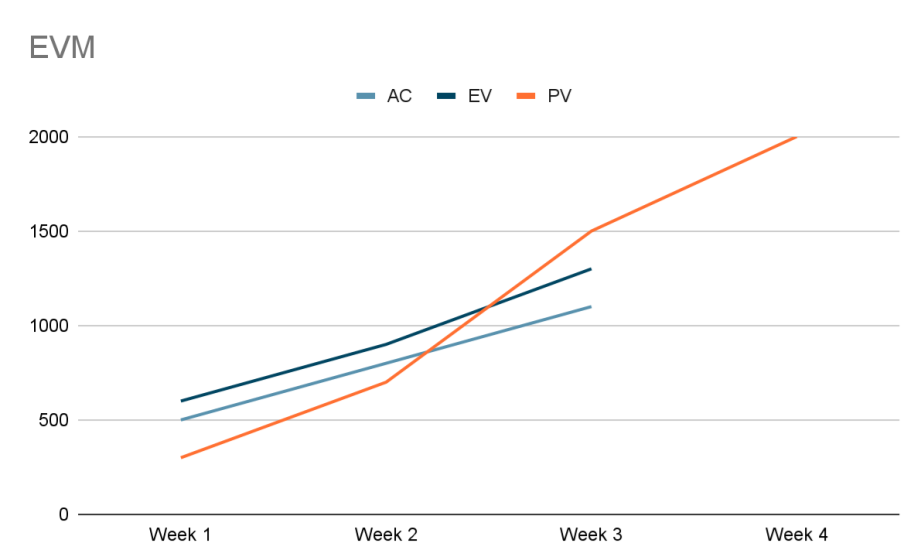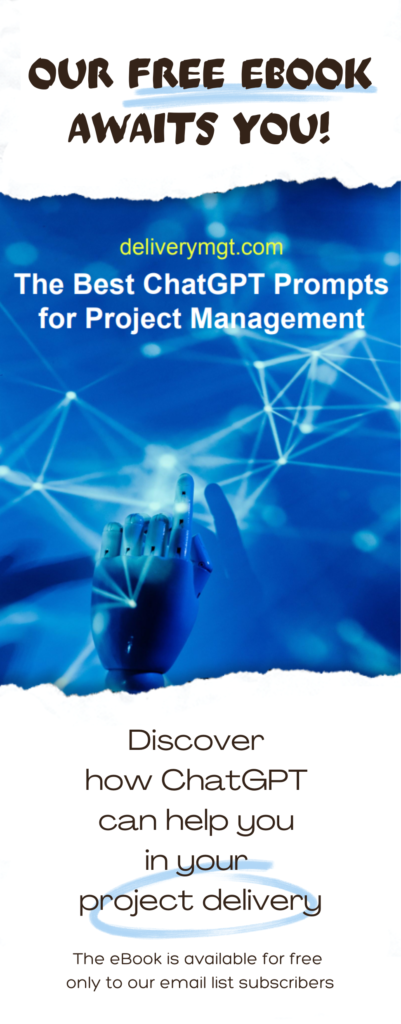
Earned Value Management: a Framework for Success
Earned Value Management (EVM) is a project management technique that measures project performance and progress. It compares the amount of work completed and its cost to the amount of work expected to be completed and budgeted cost. This article will explain EVM methodology in depth, providing a valuable framework for assessing project status and predicting final costs and completion dates. Reading on will equip you with an essential project management tool.
Key Components of EVM
The core of Earned Value Management lies in three key components:
- Planned Value (PV): it represents how much work was scheduled to be completed by a certain point in the project timeline
- Earned Value (EV): it measures the budgeted cost of the work actually completed so far. It allows us to evaluate project performance.
- Actual Cost (AC): it shows how much has actually been spent on the project until now.
By comparing these three elements, project managers can assess a project’s progress and predict whether it will meet the budget and timeline. As such, Earned Value Management provides crucial insights through continuous monitoring of the relationships between PV, EV, and AC. With these data-driven metrics, project managers can identify issues early and take corrective action to get projects back on track.
Calculating Important EVM Metrics
Let’s now take a closer look at the EVM key performance metrics:
- Schedule Variance (SV): it measures schedule performance by subtracting Planned Value (PV) from Earned Value (EV). A negative SV indicates the project is behind schedule.
- Cost Variance (CV): it is calculated by subtracting Actual Cost (AC) from Earned Value (EV). A negative CV means the project is over budget.
- Schedule Performance Index (SPI): it evaluates schedule efficiency by dividing Earned Value by Planned Value. An SPI below 1 signals the project is behind.
- Cost Performance Index (CPI): it measures cost efficiency by dividing Earned Value by Actual Cost. A CPI above 1 is good, while below 1 indicates a cost overrun.
Monitoring these EVM metrics enables project managers to quantify schedule and cost deviations from the plan. More importantly, EVM metrics transform project data into actionable insights for keeping projects on track.
The Benefits of Using EVM
Implementing Earned Value Management offers numerous advantages for managing projects successfully. First, it provides objective metrics for assessing progress and performance, rather than relying on guesswork. These data-driven insights identify potential schedule delays or cost overruns early. Project managers can then take timely corrective actions to get projects back on track.
Moreover, with quantitative tracking of project status, teams are motivated to be more accountable. Issues become transparent and project managers can address problems proactively.
Overall, Earned Value Management drives disciplined project execution through accurate tracking, and performance measurement. With EVM, project managers can steer projects strategically using validated data and deliver projects on time and within budget.
Implementing EVM on a Project
Implementing Earned Value Management (EVM) requires upfront planning and consistent monitoring. First, the project scope and work breakdown structure are defined to identify all key activities. This forms the foundation for the detailed project schedule and budgeted cost baseline.
Once project execution begins, the project manager tracks Planned Value (PV), Earned Value (EV) and Actual Costs (AC) at regular intervals. PV comes from the schedule, EV is measured based on completed work, and AC from invoices and expense reports.
The project manager then performs periodic EVM analysis by calculating performance metrics like Schedule Variance (SV) and Cost Variance (CV). These metrics are used to identify issues and trends, as explained above.
Implementing EVM needs proper planning, monitoring, analysis and communication for early issue detection and timely response.
Limitations and Potential Pitfalls
While Earned Value Management is a valuable methodology, there are some limitations to note.
Firstly, EVM requires detailed project planning and budgeting upfront. Any errors in the initial schedule or cost baseline distort EVM calculations. Additionally, assessing the percent complete for work involves some subjectivity. Inaccurate assessments skew the Earned Value metrics.
Furthermore, EVM does not predict future performance. So EVM data may signal problems late, limiting options for corrective actions. Also, focusing solely on EVM metrics could drive short-term thinking at the cost of long-term value.
Overall, EVM remains a robust methodology if implemented properly. Still, project managers should supplement it with other techniques for forecasting and risk analysis. With a balanced approach, project teams can leverage EVM while overcoming its limitations for successful project delivery.
Conclusion
Earned Value Management is a proven project management methodology that empowers teams with data-driven insights to deliver projects successfully.
By tracking Planned Value, Earned Value, and Actual Costs, project managers gain visibility into schedule and cost performance. Metrics like Schedule Variance and Cost Variance provide objective measures to identify issues early.
While EVM has some limitations if not implemented properly, the benefits far outweigh the pitfalls. With disciplined planning, monitoring, analysis and communication, EVM allows project teams to control projects proactively.
Overall, Earned Value Management remains an invaluable tool for keeping projects on time and within budget. The insights will prove invaluable for successfully steering projects in today’s dynamic environment. Share this summary with team members to drive EVM adoption.
Italian cloud computing professional with a strong background in project management & several years of international experience in business consulting. His expertise lies in bridging the gap between business stakeholders & developers, ensuring seamless project delivery. During his free time, he enjoys fatherhood and immersing himself in nature.

